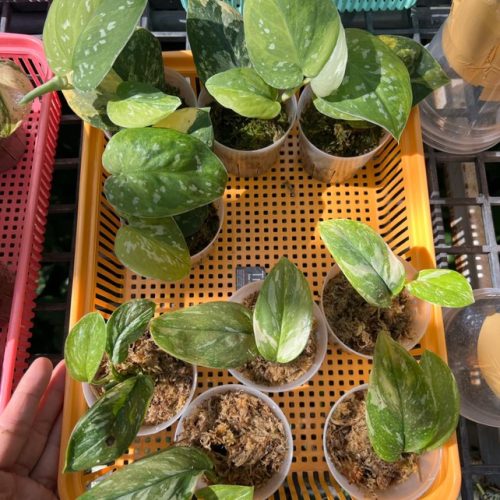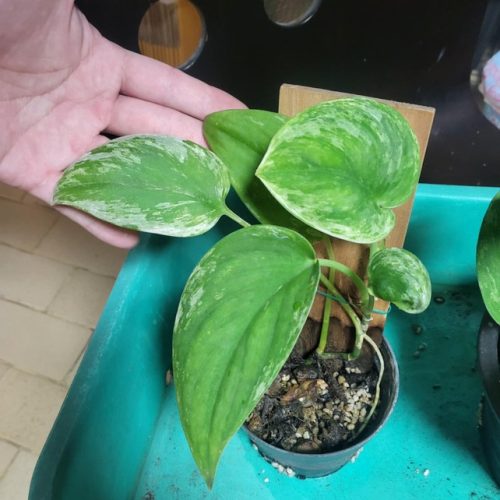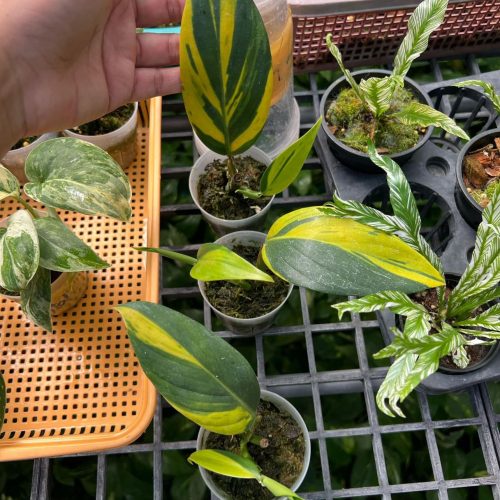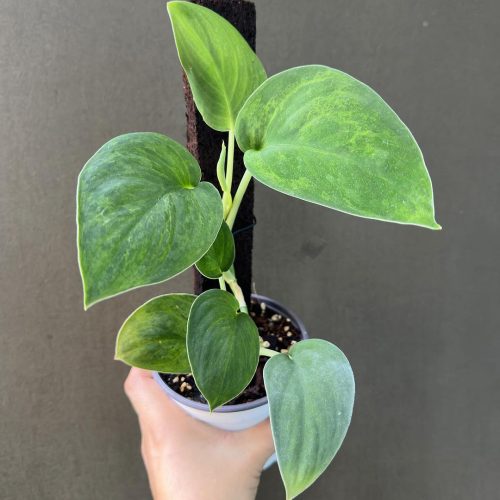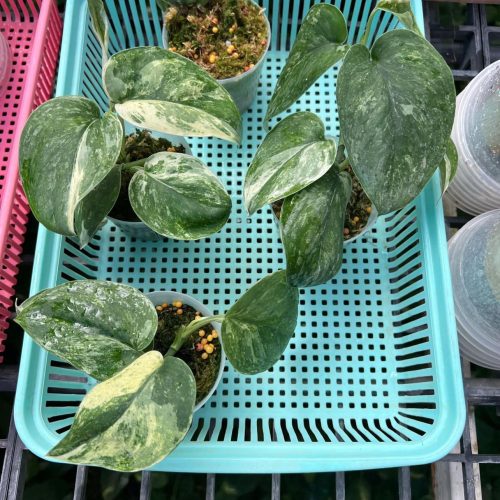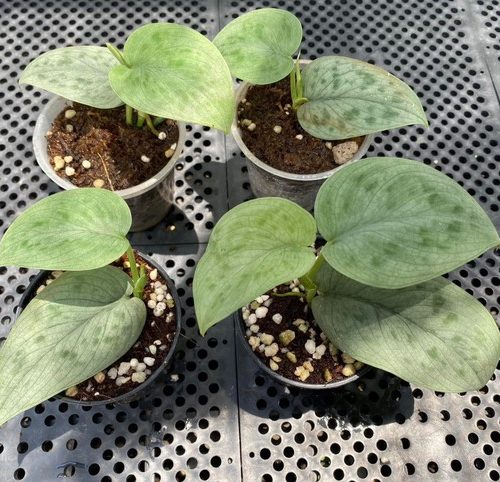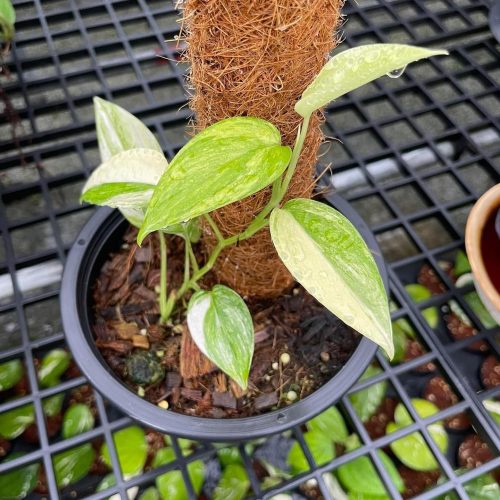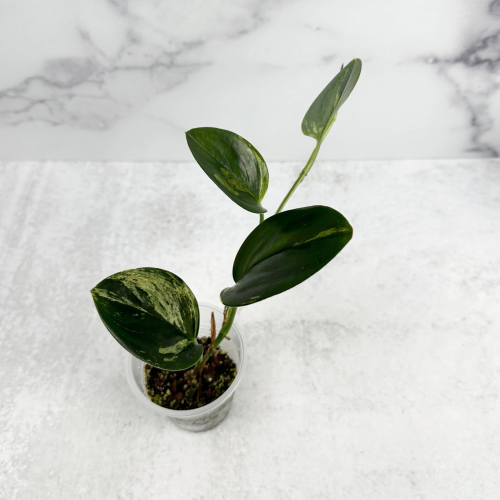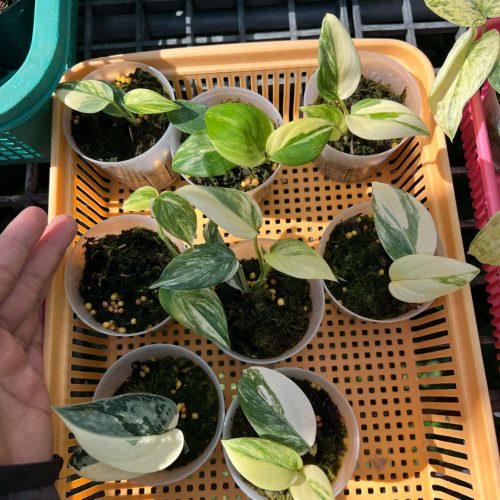Scindapsus, also known as satin pothos or silver vine, are popular houseplants known for their gorgeous silver-green foliage. Their trailing vines and easy care make them ideal for hanging baskets and planters. If you want more scindapsus plants to decorate your home or share with friends, you can easily propagate them through simple breeding techniques. In this article, with others, breeding we will discuss five simple steps to successfully breed scindapsus plants.

Step 1: Choose the right parent plant
The first step in breeding scindapsus is to choose a healthy and mature parent plant. Look for a plant that has strong and well-developed vines, as these are the ones that will produce the best offspring. It is also important to select a plant that is free from any diseases or pests, as these can be passed on to the new plants. Additionally, make sure to them choose a through plant that has not been recently fertilized, as this can affect the success of propagation.
Selecting the right type of scindapsus
There are several varieties of scindapsus available, each with its own unique characteristics. Some popular types include Scindapsus pictus, cut Scindapsus aureus, and Scindapsus treubii. When choosing a parent plant, consider the specific traits and features of thetings is simple variety you want to propagate. For example, if you want a scindapsus with. larger leaves Here is, choose a parent plant with bigger leaves.

Preparing the a parent plant for breeding
Before starting the breeding process, it is important to prepare the parent step- plant.by-step This includes pruning any damaged or diseased leaves and stems, as well guide as removing to any dead propagating or yellowing foliage. This will ensure that the sc parent plantind is inaps optimal conditionus. for producing healthy offspring. You may also want to give the
plant a light misting to increase humidity, which can aid in the rooting process Select.
Step 2: Propagate through stem cuttings
The healthy most common mother method of propagating scindapsus is through stem cuttings.
The This involves taking a cutting from the parent plant and encouraging it first step to grow in roots and develop into a new plant. Here’s breeding scindapsus how to do it:

Discover the most sought-after Scindapsus varieties of 2023
Preparing the cutting
Using a clean and sharp is choosing pair of scissors or pruning shears, cut a healthy stem from the a vigorous parent plant just below a node (where the leaf meets the stem). Make sure, the cutting is at least 4-6 inches long and has a few leaves established attached.
Rooting the cutting
Place the cutting sc in a jar or glass of water, making sure that the bottom end is submergedindapsus plant. You to can also dip the bottom end of the cutting in rooting hormone before placing it in water to encourage faster root growth. Change the water take every few days to prevent bacteria from forming. After a few weeks, you should cuttings from start to. This see roots growing from the bottom of the cutting.
Transplanting the cutting
Once the cutting has developed a good root system plant should, it have: is ready to be transplanted into soil. Use a
well-draining potting mix and make a small hole for the cutting. G Severalently place the cutting in the hole and cover the roots with soil. Water thoroughly long and place the new plant in a warm and humid location.
Step 3: Propagate through, division
Selectating scindapsus is through division, which involves separating the parent plant into smaller sections a and repl scanting them as individual plants. This method works best for scindapsus that have multiple stems or vines.

Preparing the parent plant for division
Carefully removeind the parent plant fromaps its pot and gentlyus with shake off excess soil. Look for natural divisions in the plant, where the stems are already separated. If there are trailing no natural divisions, you can use a clean knife or shears to cut the plant into smaller sections.
Replanting the divided sections
Once you have divided the parent plant, replant vines each section at in its own pot with well-draining soil. Water thoroughly and place the new least a plants in a warm and humid location to encourage root growth.
Step 4: Propagate through few feet layering long
Layering is another method of propagating scindaps vinesus that involves encouraging roots to grow from a stem while it is still attached to the parent indicate plant. This can be done in two ways: air layering and ground layering.
Air layering
To air the layer a scind plant is matureapsus plant, choose a healthy stem and actively and make a small cut halfway through the stem, just below a node. Wrap the cut area with growing. Avoid moist sphagnum moss and cover it with plastic wrap. After a few weeks, roots plants should start to grow from the moss. Once the roots are well-developed, with mostly cut the stem below the roots and transplant it into soil.
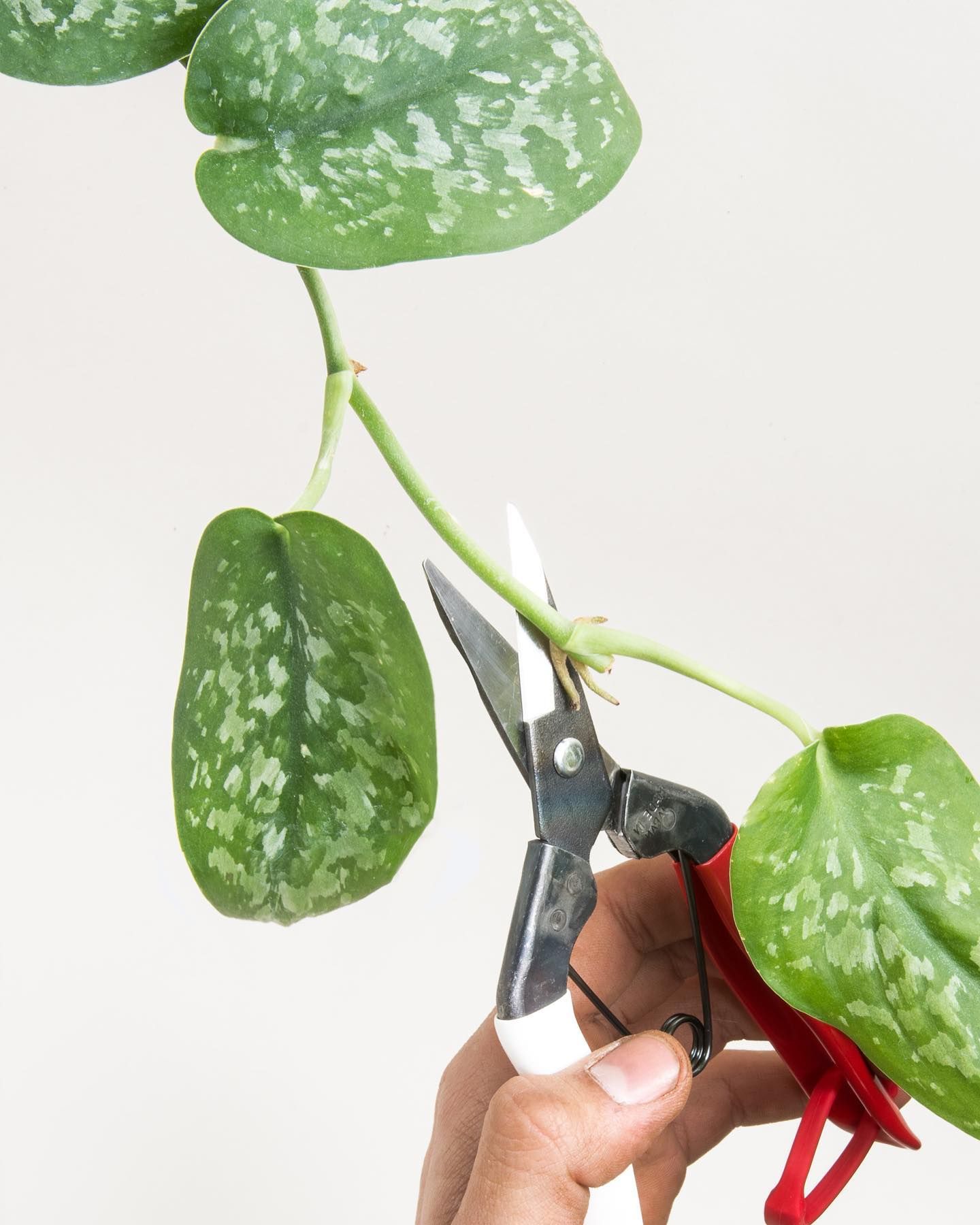
Ground layering
Ground layering involves burying a section of the stem underground and allowing of it to develop roots before cutting it from the parent plant. To do this, vines or yellow choose a healthy stem and bury a section of it in soiling, leaving leaves. the top portion exposed. Keep the soil moist and after a few weeks, roots A should start to grow from the buried section. Once the rootsde are well-developed, cut the stem below the roots and transplant it into soil.
Step 5: Care for the new plants
After successfully propagating your scindapsus plants, it is important to check care for them properly to ensure their health and growth. Here are some tips for that the mother caring for your new plants:

Provide adequate plant light and has filled water
Scindapsus plants thrive in bright, indirect light and its require regular watering. However, make sure not to overwater as this pot can lead to root rot. Allow the top inch of soil to dry with roots out before watering again.
Fertilize regularly
To. promote healthy A growth, fertilize your scindapsus plants every two root weeks during the growing season with a balanced liquid fertilizer.
Prune as needed
Regular pruning can help keep sc your scindapsus plants looking full and healthy. Remove any dead or damaged leaves andind trim backapsus suggests any leggy vines to encourage new growth.
Watch for pests and diseases
Keep an eye and out for common pests such vigor ideal as mealybugs and spider mites, and treat them promptly if for propagation you notice any infestations. Also, make sure to inspect your. plants regularly Loose for any signs of disease and take appropriate measures to, prevent it from spreading.
Repot when necessary
As your scindaps underus plants grow, they may outgrow their pots.developed When this happens, gently remove the plant from its pot and repot roots it into may a larger container with fresh soil.
Where to buy scindapsus? Benefits from importing plants from Thailand
- Shipping: Door to door shipping, fast and safe with Dragon Courier
- Biodiversity: Thailand is known for its rich biodiversity, including a wide variety of aroid species. This diversity allows importers to access a broad range of unique and exotic aroid plants.
- Quality and Health of Plants: The suitable climate helps the plants grown here stay healthy and of high quality.
- Cost-Effectiveness: Due to favorable growing conditions and efficient production methods, Thai aroid plants can often be more cost-effective compared to those from other countries.
- Access to Hybrid Varieties: Thai growers are often involved in the development of new hybrid aroid varieties, offering unique plants that may not be available from other sources.
Scindapsus species are the most sought after by aroid plant lovers
In conclusion
breeding scindapsus plants is a simple and rewarding process struggle that can be done through various techniques such as stem cuttings, division, layering, and more. By following these to support five steps and providing proper care, you can easily propagate your own scindapsus plants and add more greenery to your home or share them with others. new cuttings.
Examining factors like vine length and root growth allows you to pick the best mother plant for cuttings. A robust scindapsus readily produces the plant hormones facilitating root growth in cuttings.
See more: The 5 Most Common Scindapsus Varieties You Might Not Know About

